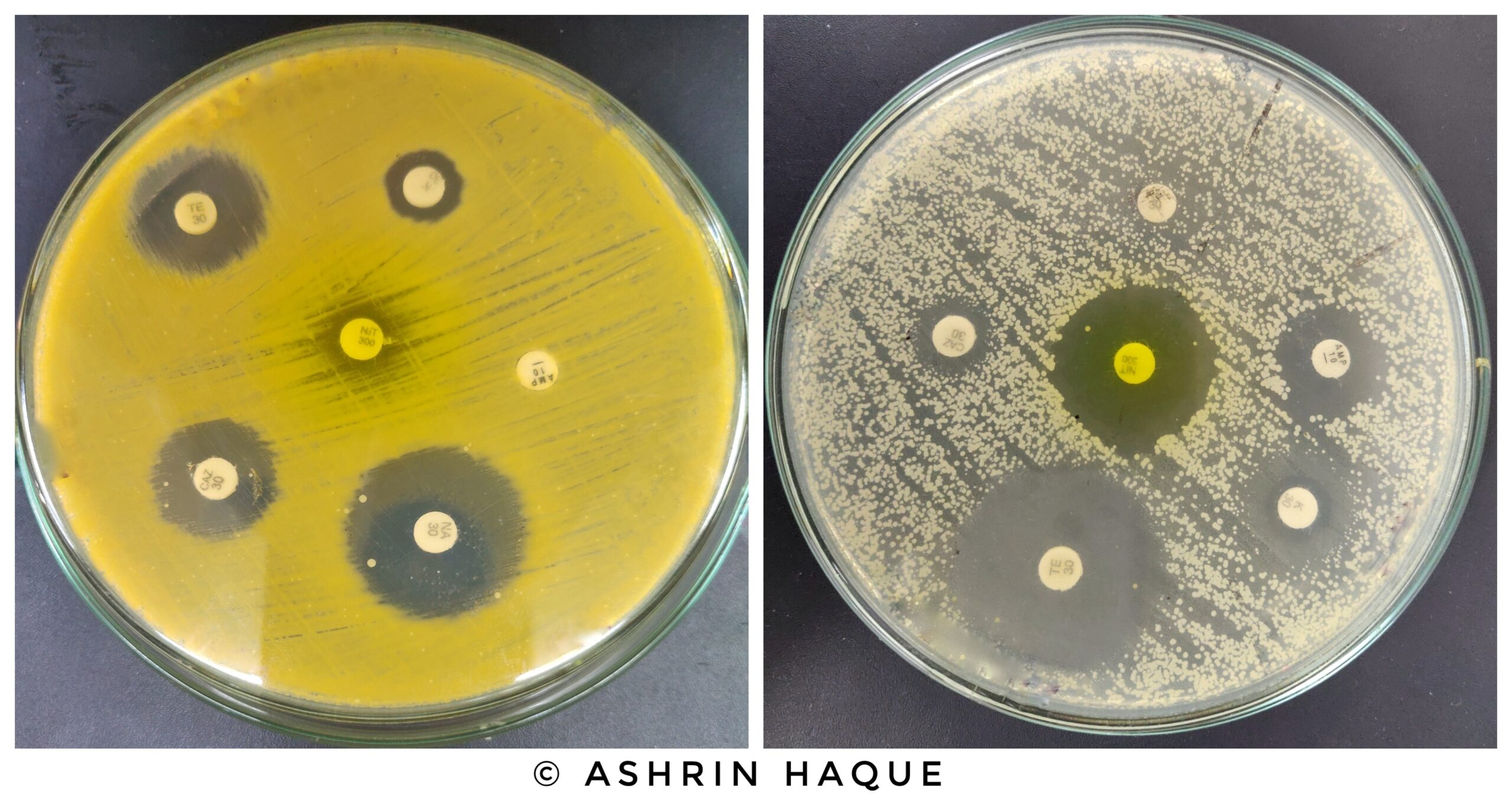Abstract
There are many techniques to find out protein concentration in a sample, biuret assay is one of them. Biuret assay is a rapid and efficient way to find out protein concentration in a sample. In this experiment a standard protein sample is used to make a standard curve, using known concentration and finding out absorbance by using a spectrophotometer, which is then used to find out the unknown protein samples’ concentration. This technique is based on the absorbance of protein sample when mixed with a biuret reagent, which gives bluish color when there is no protein in the sample and purple in presence of protein. The amount of protein dictates the intensity of the color when the reagent is used, by measuring which, protein concentration can be found. This technique has its advantages and limitations, and many points of error while doing experiments.
History
Biuret assay is one of the biochemical assays that can accurately estimate a protein concentration in a sample, which has a range of 5-150 mg/mL. The history of this test is fascinating as it has gone through the hands of many scientists. In 1833, Rose first described the biuret reaction where in a precipitate produced by adding a copper sulfate solution to egg albumen, he added a solution of potassium hydroxide or sodium carbonate which resulted in a violet color. In 1848, Wiedemann first obtained biuret (NH2CONHCONH2) by pyrolyzing urea or urea nitrate. In 1857, Gustaw Piotrowski first documented this test. Though biuret reaction was first applied to the study of proteins by Ritthausen and Pott, Riegler first applied this reaction to a biological fluid in 1914 where he determined albumin (total protein) in the urine where, as a standard, he used egg albumen. This reaction was not used frequently as a quantitative procedure before 1942, but that year, a single biuret reagent, incorporating the copper salt and the alkali was introduced by Kingsley. A more recent procedure was described by Weichselbaum, where he made a stable biuret reagent by adding sodium potassium tartrate (Rochelle salt) as stabilizer and potassium iodide to prevent auto reduction of the alkaline copper tartrate and separation of cuprous oxide. [1]
Process
It is a rapid and efficient way to find out protein concentration in a sample. In this test, the spectrophotometer is used to find out the absorbance of our protein sample usually at 540nm (absorbance spectroscopy). Another important element in this test is the biuret reagent. Though the name suggests it has biuret in it, the actual reagent doesn’t contain any biuret. The name biuret is stuck to this test because biuret also gives positive results in this test. [2] [3]
The chemicals used in the biuret reagent are sodium potassium tartrate, copper sulfate x 5 H20, potassium iodide, and 0.2M NaOH. From these chemicals, hydrated copper sulfate provides Cu(II) ions which form bonds with peptide bonds, NaOH provides alkalinity in the solution and sodium-potassium tartrate stabilizes the chelate complex and prevents precipitation of copper hydroxide. [2] [3]
The mechanism of this test can be described as a reaction between cupric ions and the peptide bonds of proteins. In an alkaline solution, a light-blue to purple-colored complex is formed when cupric ions complex with peptide bonds in presence of sodium potassium tartrate. [2] [3]

Figure- the reaction of Biuret assay
As the universality of this test lies on the reaction which only occurs with peptide bonds, not with the side chains, and the number of peptide bonds per unit weight is the same for all proteins, sample color intensity is directly proportional to protein concentration.
In this assay, a standard curve is plotted with the reading of a specific standard solution, for instance, an aqueous solution of Bovine Serum Albumin (BSA). This is required to lessen the error rate as the unknown sample has unknown composition. By finding out the absorbance of the BSA solution, and charting a plot, a straight-line equation, y=mx+c can be found which then can be used to find out unknown protein samples concentration using absorbance. [2] [3]
Advantage and Limitation
The advantage of this test is this test has a relatively short turnaround time with few interfering substances, does not rely on the composition of protein, and is relatively efficient.
Though it was rapid and efficient, it has some limitations. It is known that this test can measure 5-150 mg/mL concentration, which in real life is too high. Most of the time, researchers use less than that range. Moreover, some substances can interfere, such as buffers that contain ammonia, and can change the results.
Points of Errors
There are also some points of error in this experiment. Errors such as spoiled BSA (spoiled standards skew with graph), uncalibrated spectrophotometer, low cuvette clearness, faulty standard preparation, not finding out best wavelength for a particular experiment, not subtracting absorbance found at blank, reagent and samples mixed with reagents placed without shade, protein aggregation, faulty solution transfer which can increase or decrease total volume can be seen.
Conclusion
There are some alternate tests to this experiment, such as the Lowri method, the BCA test which is a 2nd generation biuret test and has higher sensitivity, and the Bradford test. In short, biuret assay is a rapid and efficient way to find out protein concentration in a sample.
References
1. Lubran, M. M. (1978). The measurement of total serum proteins by the Biuret method. Annals of Clinical & Laboratory Science, 8(2), 106-110.
2. Janairo, G., Linley, M. S., Yap, L., Llanos-Lazaro, N., & Robles, J. (2015). Determination of the sensitivity range of biuret test for undergraduate biochemistry experiments.
3. Wokes, F., & Still, B. M. (1942). The estimation of protein by the biuret and Greenberg methods. Biochemical Journal, 36(10-12), 797. Retrieved from- https://www.ncbi.nlm.nih.gov/pmc/articles/PMC1266873/
If you like this article, you can go through our other articles written by the same author-
- BIOREMEDIATION: HOW IT WORKS – https://learnlifescience.com/bioremediation-how-it-works/
- GM FOODS: IS IT A THREAT TO HUMAN HEALTH?- https://learnlifescience.com/gm-foods-is-it-a-threat-to-human-health/
“Since the article has been written to reflect the actual views and capabilities of the author(s), they are not revised for content and only lightly edited to be confirmed with the Learn life sciences style guidelines”












For my thesis, I consulted a lot of information, read your article made me feel a lot, benefited me a lot from it, thank you for your help. Thanks!
Your article helped me a lot, is there any more related content? Thanks!